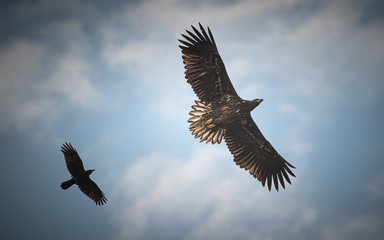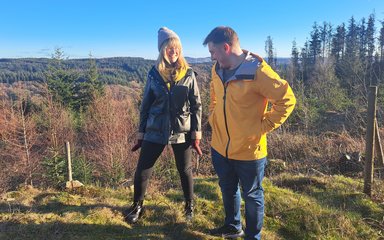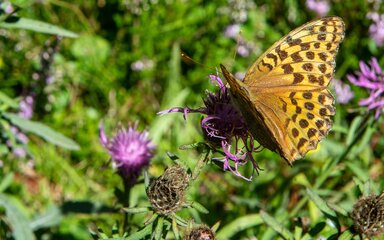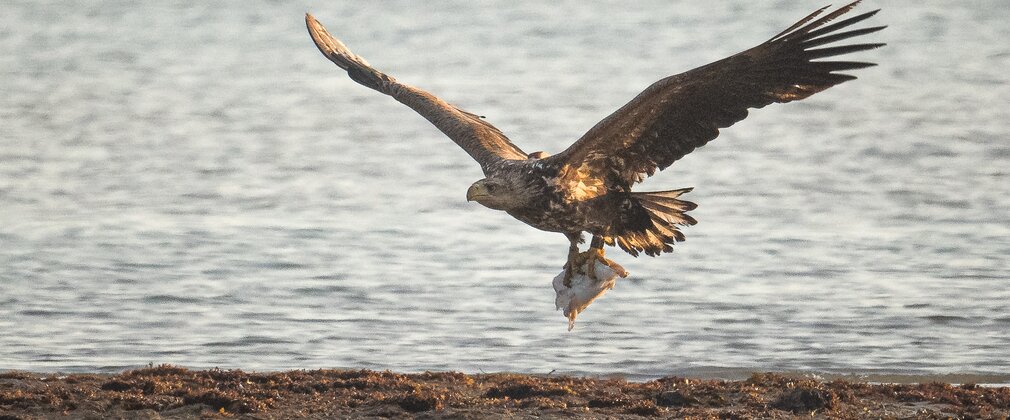
White-tailed eagles are Britain’s largest birds of prey and were once widespread across England, until persecution by humans wiped out the entire population by 1780. These iconic birds, also known as sea eagles, are now being returned through a ground-breaking conservation project led by Forestry England and the Roy Dennis Wildlife Foundation.
The project is reintroducing white-tailed eagles across southern England, returning a lost species that can offer wide-ranging benefits to nature, landscapes and people.
Initial release and exploration
Based on the Isle of Wight, the project team began releasing young white-tailed eagles under licence from Natural England in 2019, with the long-term aim of establishing an initial six to eight breeding pairs along the south coast of England. All juvenile eagles are collected from wild nests in Scotland, under licence from NatureScot, and then translocated to the Isle of Wight and reared in special aviaries before being released.
Learning the landscape
Once released, the birds explore widely for their first few years, making journeys across Britain as they build up their knowledge of the landscape. They travel to all corners of the UK, and some have gone even further by crossing the English Channel to spend time in France, the Netherlands, Germany, Denmark and Sweden.
Did you know? White-tailed eagles have a wingspan of up to 2.5 metres and have yellow legs and feet. Find out more about these magnificent birds on our white-tailed eagles species page.
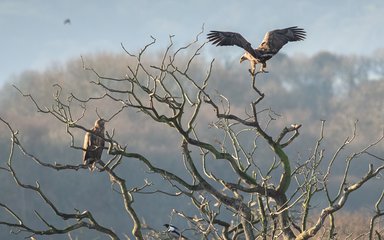
Homemaking and breeding success
Following a number of releases since 2019, many of the eagles are now settling successfully into the landscape. Several pairs of birds have formed bonds and established territories. In 2023 a chick was successfully reared, a first for the project and also the first white-tailed eagle to be born in England, in the wild, for over 240 years.
A strategic location
The Isle of Wight’s central position on the south coast is an ideal habitat for these coastal birds, with good foraging areas for fish and other food close by. From here, the birds can spread east and west along the coast and, in time, may link up with existing populations of white-tailed eagles living in Ireland, Scotland, and mainland Europe.
Tracking, monitoring and learning from data
Each bird is fitted with a satellite tracker so the team can monitor and track their progress in real-time. This data, and expert observations from the field, are helping us learn so much about white-tailed eagles and the vital role they play in the natural world. The team have recorded more than 800 separate observations of diet and hunting behaviours so far.
However far the birds explore, the tracking data clearly shows that the released eagles consistently return to the south coast as they see this area as their natal home.
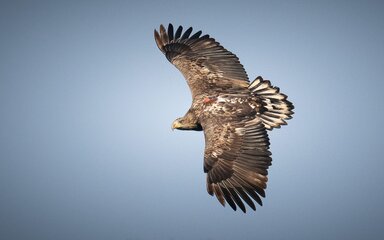
Working with the community
The project works closely with local groups and a range of organisations representing farmers, councillors, fishermen, the tourism sector and the local community. These groups are all directly involved in the project steering groups.
Public support for the project is high with over 80% of people surveyed supporting the reintroduction of the birds to the local area.
Latest from the project
As of August 2025, 45 young white-tailed eagles have been released by the project and several pairs of birds have established territories in the south of England.
In 2023 a chick was born, the first in England since the eighteenth century. A further two chicks were born in the summer of 2024, and in the summer of 2025 pairs in Sussex and Dorset both bred, bringing the total number of these amazing birds born in the wild to six.
Image Gallery
Click the thumbnail buttons below the large image to view the different images full size.
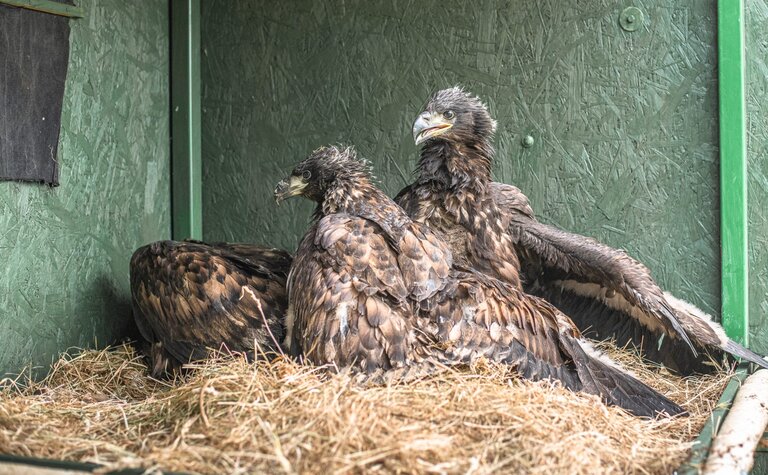
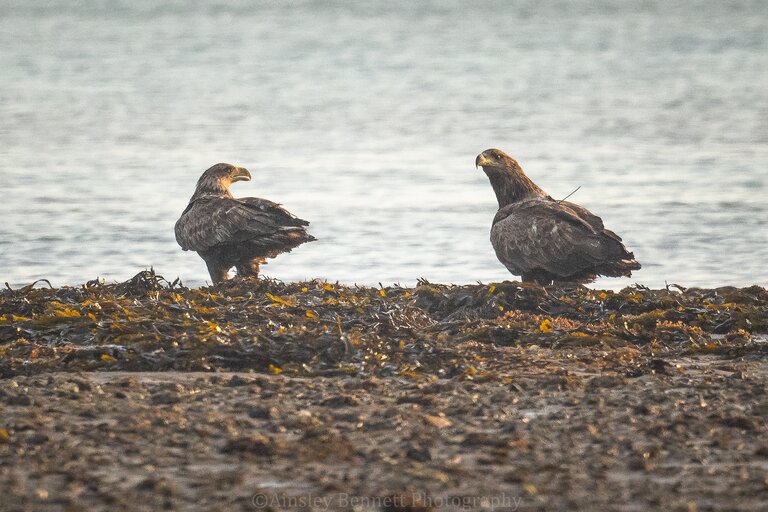
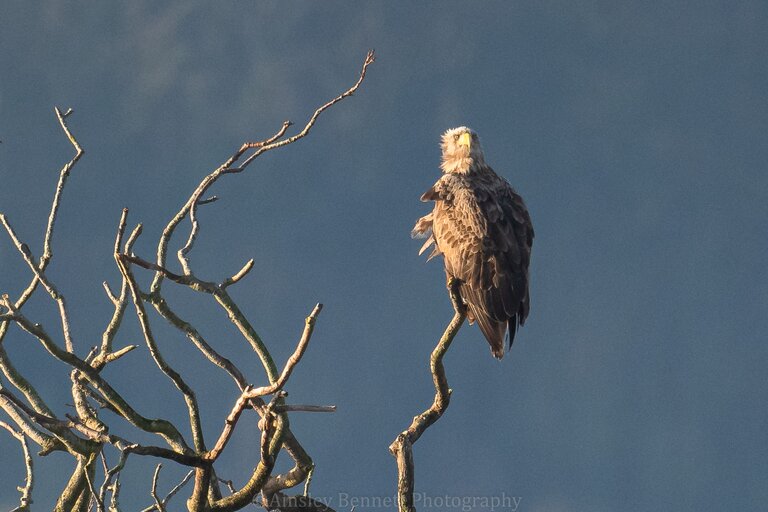
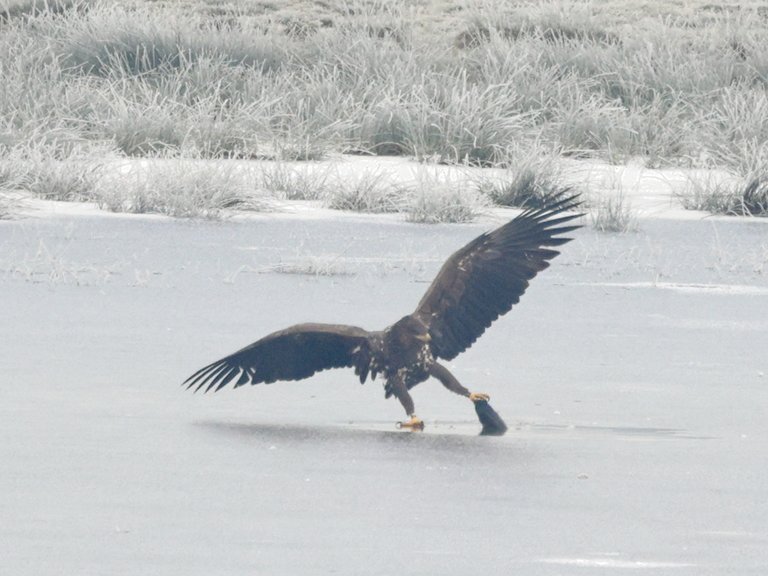
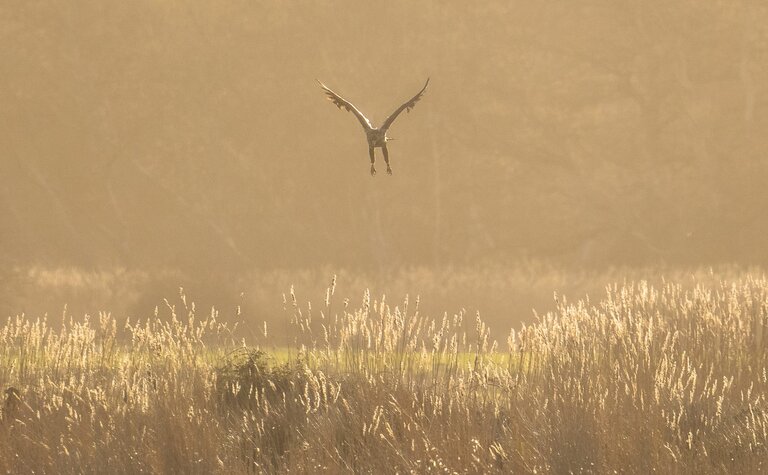
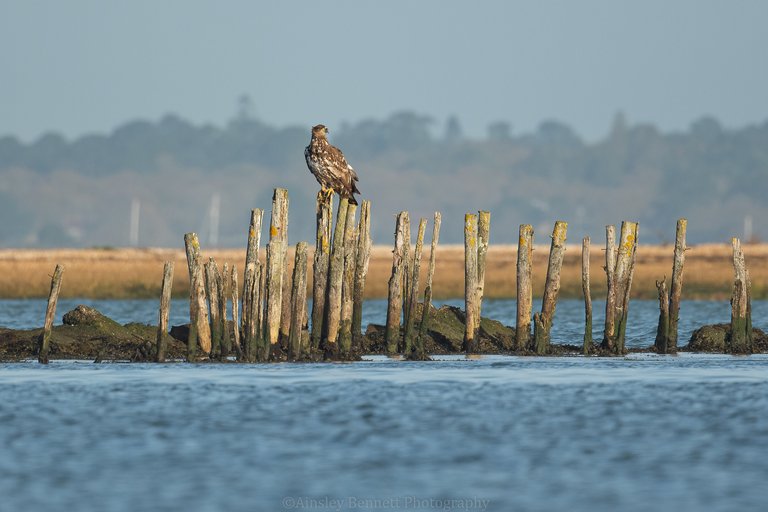
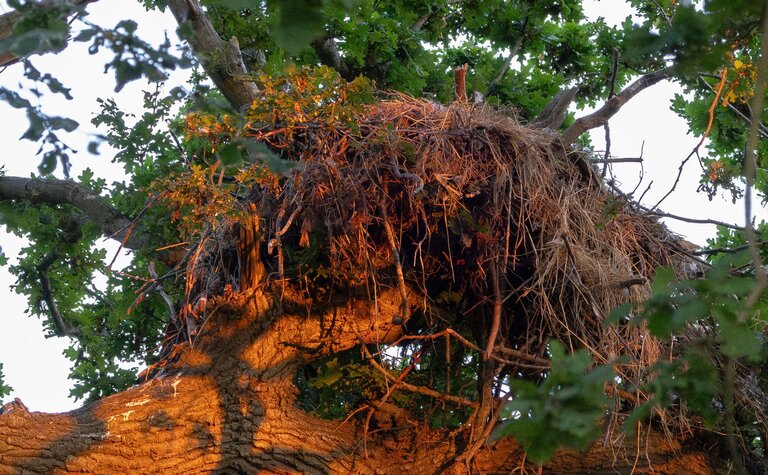
Project updates archive
August 2019
The project starts with six young birds from Scotland being released at a private location on the Isle of Wight. The eagles were cared for on the island by experts before their release, making sure there were acclimatised to local conditions. Volunteers contributed over 500 hours of time preparing food, feeding the birds and helping to prepare the reintroduction site.
September 2019
The six juveniles released in August are settling in. It’s becoming clear that although they look similar, they have very different personalities! One male has flown 680km around southern England, but the rest have remained on the island exploring their new home.
October 2019
The birds continued to explore and develop their skills, finding food and new places to perch. Most of them remained on the Isle of Wight and the surrounding Solent coastline, while two made longer exploratory flights and another ventured to Oxfordshire.
Sadly, one of the young eagles that had remained on the Isle of Wight after release died.
December 2019
Three birds remained on the Isle of Wight and one in Oxfordshire. Satellite tracking data showed that they’re often very sedentary, remaining quietly perched waiting for prey rather than making long hunting trips. The birds found plenty of their own food but one still returned to the release site every day to feed on the fish still being provided.
Two birds (female G3-24 and male G2-74) were recorded spending time together, roosting in the same copse (and sometimes even the same tree). White-tailed eagles don’t breed until they are four or five, but some pair bonds do establish earlier than that.
May 2020
Our white-tailed eagles have spread far and wide. Male bird G3-93 is famous in Oxfordshire and Buckinghamshire but seldom seen. He’s travelled since mid-March and journeyed more than 1,000 kilometres during the spring. Female bird G3-18 also left the Isle of Wight in mid-March, making a series of flights around the west country from her new base in Wiltshire. She then made a direct flight, joining G3-93 on the journey to the North York Moors.
Bird G3-24, the last of the group to leave the island, was seen several times on her six-day journey to eastern England. She took just a couple of days to reach the coast of Norfolk, but flew four days against the wind to return to the Isle of Wight.
G2-74 and G3-24 spent much of the winter together and both birds have been busy learning new skills since returning to the Isle of Wight. They have become adept at catching grey mullet along the coastline.
November 2020
Seven more young eagles were released in summer 2020, joining the remaining four of the original six. Some of the new releases have already started exploring further afield along the south-east coastline.
G3-24 has been getting to know the newly released birds, observing them and spending time in the same areas. Young white-tailed eagles are sociable, sometimes quarrelling over food but otherwise tolerant of one another.
G2-74 stayed local throughout the summer, regularly catching grey mullet, cuttlefish and gulls, or heading inland for rabbits during poor weather.
G4-53 sadly died during the autumn following a collision with a power line.
June 2021
Since the summer 2020 update, our white-tailed eagles have covered huge distances up to North Yorkshire and Scotland. Only one remained relatively local to the Isle of Wight.
On 20 March all four surviving birds from the first release in August 2019 were on the Isle of Wight; this was the first time they’d all been present since September 2019. Importantly, this is the age we expect to see these birds behaving in this way. White-tailed eagles typically return to within 50 kilometres of their natal site at around two to three years old.
With the establishment of territories comes a change in behaviour: a lessened tolerance for other eagles. G3-93, despite returning to the island twice, has been chased off by G2-74 in the first evidence of territorial disputes between the 2019 birds. Bird G2-74 has also shown little tolerance for the 2020 males, with both G4-08 and G4-61 returning but quickly ousted!
All six of the surviving 2020 cohort have travelled away from the Isle of Wight. Some have been visiting other white-tailed eagle populations, which is very exciting. Male G4-63 made a journey across the English Channel and then travelled north through France, Belgium, the Netherlands, Germany, and eventually Denmark.
Summer 2022
Five of our white-tailed eagles have journeyed to Scotland this year, with another revisiting Denmark before returning.
Two birds released in 2019, G2-74 and G3-24, have formed a strong pairing on the Isle of Wight. They can regularly be seen ‘dueting’ (calling to one another), which is a key bonding behaviour. They’ve also recently been spotted occasionally carrying sticks and attempting to copulate. As the resident Island pair, they seldom tolerate any interlopers for long and actively pursue other eagles away from their territory. This behaviour is vital in establishing a reliable food resource when rearing young.
A pair of birds released in 2020, G4-71 and G4-05, have also shown early signs of forming a pair and have recently spent a great deal of time in West Sussex together.
Sadly three birds released in previous years died last winter. Post-mortem results showed that G4-61 died of brodifacoum poisoning, as detailed on our partner’s website Roy Dennis Wildlife Foundation.
Due to the worsening situation with Avian Influenza, we won’t release the next cohort this summer. The virus is killing many breeding seabirds in eastern and northern coasts of the UK and poses a large risk to white-tailed eagles.
Fieldwork also indicates it is a poor breeding year for the white-tailed eagle in Scotland, so the project team have decided not to translocate any birds this year.
February 2023
Since summer 2022, a number of eagles have become regular visitors to nearby Poole Harbour.
As part of the monitoring and evaluation of the project, we assess the public’s attitude towards the eagles. Last autumn we carried out a public perception survey, which was a repeat of a survey carried out in 2019. The results are encouraging, with 93% of respondents supportive of the project, compared to 86% in 2019, with all interest groups showing increased support.
October 2023
The earliest we expected breeding to begin was 2024, so it was a great surprise when the project’s first chick arrived this summer. This was the first time eagles have bred in England for over 240 years.
The parent pair built their huge nest, laid and incubated an egg, and shared the roles of feeding and caring for their chick up to fledging. Now, several months on from leaving the nest, the ‘chick’ is still hanging around his parents.
Despite the fact that he is fully grown, they will continue to feed him and until they start to prepare for the next breeding season. At that point if he hasn’t left by his own accord, his parents will force him out.
This year we released another cohort of young birds, collected under licence from Scotland and carefully looked after in appropriate conditions until ready to fledge.

